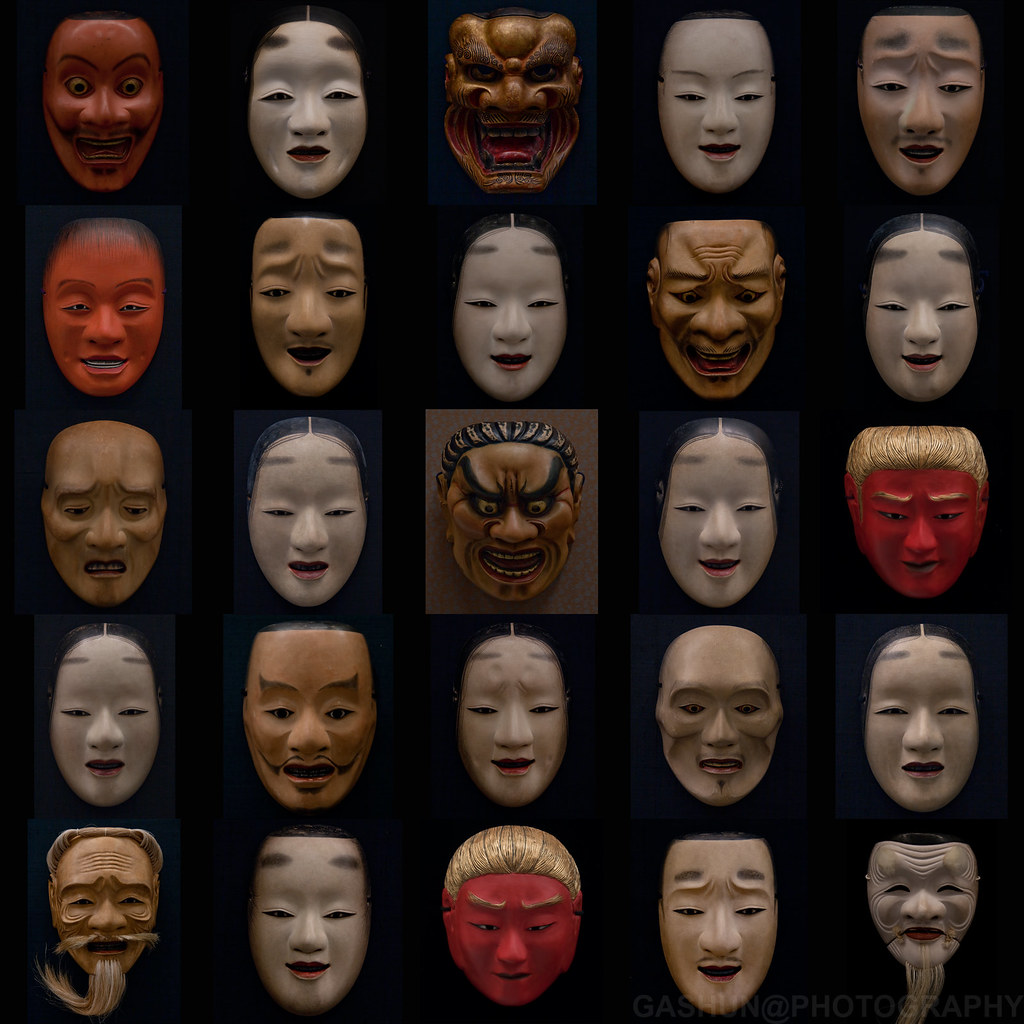Noh is performed on a square stage with a roof that is supported by pillars. All sides of the stage are open except for the back side which consists of a wall with a painted image of a pine tree. A bridge runs off the side of the stage for performers to enter. Noh used to be typically staged outdoors, but recently modern indoor theaters have also become a common venue.
In noh all performers are males. There are 5 roles that make the noh theater work. Shite is the leading character. Depending on the play, the shite may act as a holy old man, a deity, a demon, a spirit or a living man. His movements express various moods. The supporting actor is called a Waki. The waki plays roles such as a priest, monk or samurai. In contrast to the shite, the waki always portrays living people. Four musicians provide accompaniment for the performance, they are called Hayashi - the musicians, with a flute (fue), shoulder drum (kotsuzumi), hip drum (otsuzumi) and stick drum (taiko). The chorus or Juitai, sits to the left of the stage and assists the shite in narrationing the story. Koken the stage attendants, dressed in black, are not part of the play but assist the performers in various ways, such as handing them props.
The shite wears masked made of Japanese cypress which is a key element of noh. They tell the audience what kind of character is being portrayed. Frequently used masks represent demons, spirits, as well as women and men of various ages.The costumes have multiple layers and textures that have splendid colors and designs but also give off a bulky, massive figure. Expressiveness is enhanced by props, most noticeable a folding fan.
Noh was developed together with kyogen, which are comical pieces. The dual art of noh and kyogen is known as nogaku, a combination of music, dance, drama and comedy.
Noh thus became increasingly standardized, with an emphasis on tradition rather than innovation. Five main noh troupes survived and performs till this day.
Get out there and watch some Noh!
-The more you know~
